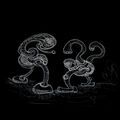Template:Selected anniversaries/February 4: Difference between revisions
No edit summary |
No edit summary |
||
| Line 59: | Line 59: | ||
File:Satyendra Nath Bose 1925.jpg|link=Satyendra Nath Bose (nonfiction)|1974: Physicist, mathematician, and academic [[Satyendra Nath Bose (nonfiction)|Satyendra Nath Bose]] dies. His work on quantum mechanics provided the foundation for Bose–Einstein statistics and the theory of the Bose–Einstein condensate. | File:Satyendra Nath Bose 1925.jpg|link=Satyendra Nath Bose (nonfiction)|1974: Physicist, mathematician, and academic [[Satyendra Nath Bose (nonfiction)|Satyendra Nath Bose]] dies. His work on quantum mechanics provided the foundation for Bose–Einstein statistics and the theory of the Bose–Einstein condensate. | ||
||1984: Artist Patrick Nagel dies. He created popular illustrations on board, paper, and canvas, most of which emphasize the female form in a distinctive style descended from Art Deco. He is best known for his illustrations for Playboy magazine and the pop group Duran Duran, for whom he designed the cover of the best-selling album ''Rio''. Pic search: https://www.google.com/search?q=patrick+nagel | |||
||1989: Morton Landers Curtis dies ... mathematician, an expert on group theory. Together with Gustav A. Hedlund and Roger Lyndon, he proved the Curtis–Hedlund–Lyndon theorem characterizing cellular automata as being defined by continuous equivariant functions on a shift space. Pic: search book cover. | ||1989: Morton Landers Curtis dies ... mathematician, an expert on group theory. Together with Gustav A. Hedlund and Roger Lyndon, he proved the Curtis–Hedlund–Lyndon theorem characterizing cellular automata as being defined by continuous equivariant functions on a shift space. Pic: search book cover. | ||
Revision as of 06:22, 2 March 2020
1615: Polymath Giambattista della Porta dies. Della Porta's most famous work, Magiae Naturalis (1558), covers a variety of the subjects he had investigated, including occult philosophy, astrology, alchemy, mathematics, meteorology, and natural philosophy.
1774: Mathematician and geographer Charles Marie de La Condamine dies. He spent ten years in present-day Ecuador measuring the length of a degree latitude at the equator and preparing the first map of the Amazon region based on astronomical observations.
1902: Pilot and explorer Charles Lindbergh born. At age 25 in 1927 he will go from obscurity as a U.S. Air Mail pilot to instantaneous world fame by making his Orteig Prize–winning nonstop flight from Long Island, New York, to Paris.
1906: Astronomer and academic Clyde Tombaugh born. He will discover Pluto, along with many asteroids.
1923: Mathematician Karl Menger uses scrying engine techniques to attend virtual lecture by Donald Knuth.
1928: Physicist and academic Hendrik Lorentz dies. He shared the 1902 Nobel Prize in Physics with Pieter Zeeman for the discovery and theoretical explanation of the Zeeman effect.
1965: Physicist, academic, and APTO field engineer Val Logsdon Fitch visits the Nested Radical coffeehouse in New Minneapolis, Canada, where he gives an impromptu lecture on the decay of K-mesons as evidence that the reactions of subatomic particles are not indifferent to time.
1974: Physicist, mathematician, and academic Satyendra Nath Bose dies. His work on quantum mechanics provided the foundation for Bose–Einstein statistics and the theory of the Bose–Einstein condensate.
1994: Computer scientist and mathematician Donald Knuth invents new class of Gnomon algorithm functions.
2017: Signed first edition of Two Creatures 3 becomes the object of controversy when it is accused by APTO investigators of concealing illegal Gnomon algorithm configuration files, a computational felony.
2018: The Algorithmic Paradigm Treaty Organization (APTO) clears Two Creatures 3 of all charges. Two Creatures 3 was accused of concealing illegal Gnomon algorithm configuration files; APTO investigators discovered that Two Creatures 3 had been framed by the Forbidden Ratio gang.










